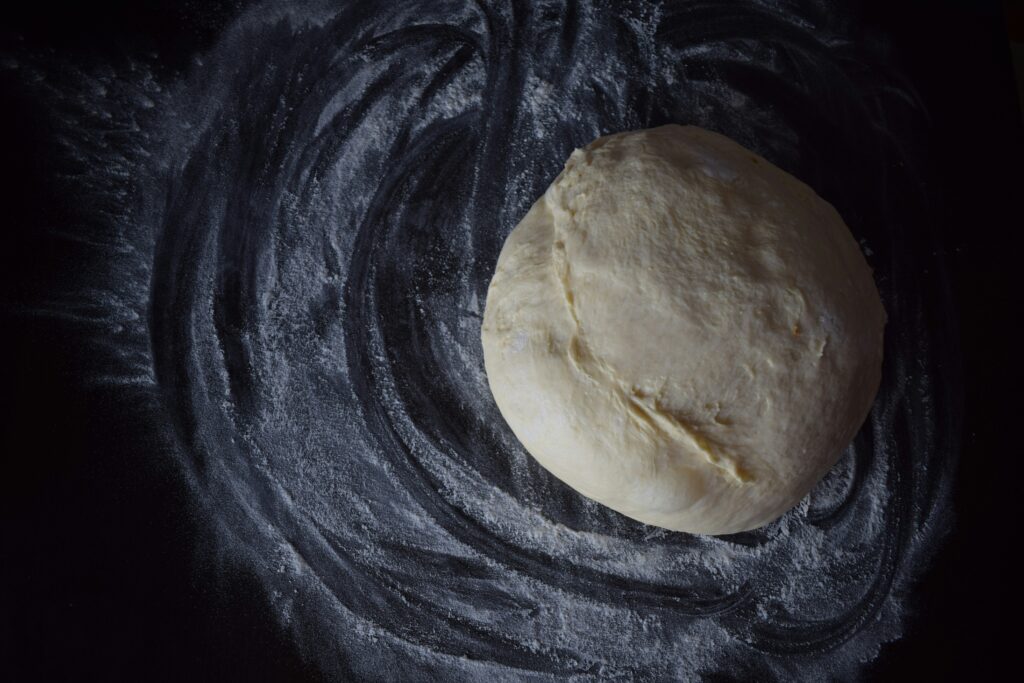🌄 Siddu: A Taste of Himachal’s Soul
Imagine standing at the edge of an apple orchard in Kullu or Rohru, as the cool mountain breeze carries the scent of pine needles and wood smoke. Somewhere nearby, in a traditional pahadi home with mud walls and slate roofs, a mother is steaming Siddu in a clay tandoor. This isn’t just cooking — it’s an ancestral ritual, passed down through generations, a celebration of slow food, patience, and love.
Siddu isn’t flashy. It’s not street food. It’s not meant to be rushed. It’s food you wait for, food that warms you from the inside, perfect for the biting Himachali winters.
🥟 What is Siddu?
Siddu is a steamed wheat bun, stuffed with savory fillings like spiced lentils, crushed walnuts, or even mawa (in sweet versions). It’s cooked slowly, allowing the flavors to deepen. The outer dough is made from fermented wheat flour, making it slightly sour, soft, and incredibly comforting.
✨ SIDDU RECIPE (Traditional Himachali Way)
📝 Ingredients
For the Dough:
- 2 cups whole wheat flour (atta)
- 1 tsp dry active yeast or local yeast culture (called khameer in villages)
- ½ tsp sugar
- A pinch of salt
- Lukewarm water (for kneading)
For the Filling (Savoury Walnut-Lentil version):
- ½ cup soaked urad dal (black gram)
- ½ cup crushed walnuts
- 1 tsp coarsely ground fennel seeds (saunf)
- 1 tsp coarsely ground coriander seeds
- 1-2 green chilies, finely chopped
- 1-inch piece ginger, grated
- Salt to taste
- A few leaves of fresh coriander
- Optional: a pinch of asafoetida (hing) for aroma
🫓 Dough Preparation
- Activate the yeast: Mix yeast, sugar, and lukewarm water. Let it sit for 10 minutes until frothy.
- Make the dough: In a big bowl, mix wheat flour and salt. Add the activated yeast mixture and knead into a soft dough using lukewarm water. Cover with a damp cloth.
- Let it rise: Keep the dough in a warm place for 2-3 hours (or longer in colder climates) until it doubles in size.
⛰️ In Himachali homes, the dough is often left overnight near the hearth, wrapped in cotton cloth, allowing natural fermentation to take place, infusing a subtle tang and earthiness.

🧆 Filling Preparation for Siddu (Urad Dal & Walnut Version)
📝 Ingredients:
- ½ cup urad dal (black gram) – soaked for 4–6 hours or overnight
- ½ cup walnuts – coarsely crushed (adds rich nuttiness and softness)
- 2 tsp fennel seeds (saunf) – coarsely ground
- 1 tsp coriander seeds – crushed or coarsely ground
- 1-inch piece fresh ginger – grated
- 2–3 green chilies – finely chopped (adjust to heat preference)
- A pinch of asafoetida (hing) – optional but recommended
- Salt – to taste
- Fresh coriander leaves – chopped (optional for freshness)
- Desi ghee – 1 tsp (optional, to mix in for a richer filling)
👩🍳 Preparation Method:
1. Soak & Grind Dal
- Wash and soak urad dal for at least 4 hours.
- Drain water completely.
- Coarsely grind it without adding any water.
- You want a grainy paste, not smooth. This texture is key to giving the filling its unique bite.
2. Crush the Walnuts
- Using a mortar-pestle or just your fingers, coarsely crush the walnuts.
- Don’t powder them — keep some larger chunks for texture.
3. Mix the Spices & Aromatics
- In a bowl, combine:
- Ground urad dal
- Crushed walnuts
- Crushed fennel seeds
- Crushed coriander seeds
- Grated ginger
- Chopped green chilies
- A pinch of hing
- Salt
- Optional: Chopped fresh coriander and a spoon of desi ghee for richness.
- Mix everything well by hand. The warmth of your hands actually helps release the oils from the spices and nuts — a traditional trick!

🫶 Texture & Taste Check:
- The filling should be moist, but not watery.
- It should hold its shape in a ball if pressed.
- The fennel and coriander give it a warm, slightly sweet-spicy note.
- The walnuts give a buttery crunch.
- The hing and ginger bring depth and digestion support, important in colder climates.
🔥 Assembling and Cooking the Siddu
- After the dough has risen, divide it into equal portions.
- Roll each into a small disc.
- Place a spoonful of the filling in the center.
- Seal it like a dumpling, gently shaping it into a bun.
- Steam it: Traditionally, Siddus are steamed over a wood-fired stove using metal containers with cloth-lined lids. At home, use a steamer or pressure cooker without the whistle.
- Steam for 20–25 minutes on medium heat until the outer crust is firm but soft to touch.
🥹 The kitchen fills with the sweet, yeasty aroma of steamed dough and spices – a smell that, to a Himachali, feels like home.
🥣 Himachali Walnut-Mint Chutney Recipe (Traditional)
Ingredients:
- 1 cup fresh mint leaves
- ½ cup fresh coriander leaves
- ½ cup walnuts
- 2–3 green chilies
- 1 tbsp curd (optional, adds tang and creaminess)
- 1 tsp lemon juice
- Salt to taste
- 1–2 cloves garlic (optional)
- Water as needed


Preparation:
- In a mortar-pestle or mixer grinder, combine mint, coriander, green chilies, and garlic.
- Add walnuts and blend coarsely.
- Add curd, lemon juice, and salt.
- Blend again to a slightly chunky paste. Adjust water to desired consistency.
💚 This chutney is cool, spicy, nutty — a perfect earthy match to the warmth of Siddu. In Himachali folklore, this chutney is often said to “calm the fire in your belly” — a nod to its digestive properties.
🕉️ Cultural Significance
Siddu is more than food — it is a symbol of Himachali hospitality and warmth.
- In upper Shimla, Kinnaur, and Kullu, Siddu is served during festivals, family gatherings, and even funerals.
- Often paired with ghee or desi makhan (homemade butter), the dish is deeply tied to the agrarian lifestyle of the region.
- Its slow cooking represents the slow pace of mountain life — not hurried, not mechanical, but deeply personal.
In many Himachali homes, elders teach younger family members how to shape the Siddu just right — ensuring the filling is balanced, the dough neither too thick nor thin. It’s not just about food — it’s about continuity, lineage, belonging.
🫶 Serving Suggestion
- Serve hot Siddu sliced in halves, drizzled with ghee.
- Pair it with mint-walnut chutney, or even tamatar ki chutney (spicy tomato relish).
- Some even serve it with chana madra, a tangy yogurt-based chickpea curry, for festive meals.


🏔️ Final Thoughts
To eat Siddu is to take a bite out of the Himalayas themselves — earthy, grounded, honest.
It’s food with emotions, food with stories embedded in its folds.
If you ever share Siddu with someone, know that you are not just feeding them — you are inviting them into a world where the mountains speak, the rivers hum, and the kitchen is a temple of warmth.


No responses yet